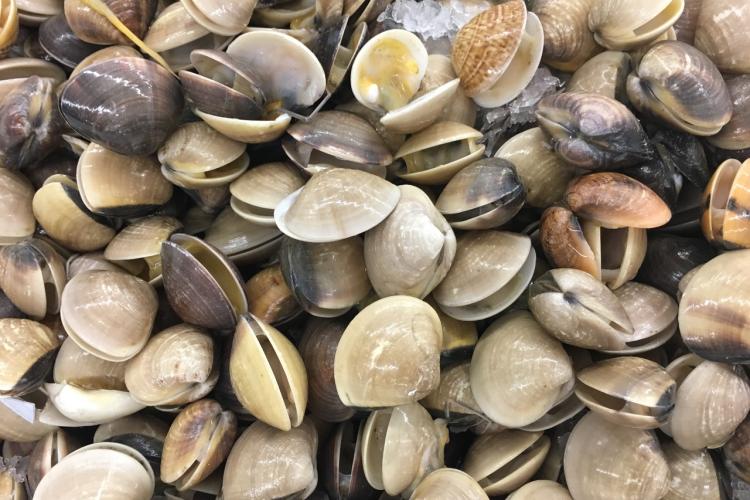The NOAA Marine Aquaculture Policy (2011) specifies the goals, objectives, and priorities for all aquaculture-related activities at NOAA in the context of its marine stewardship mission.
Statement of Policy
- Encourage and foster sustainable aquaculture development that provides domestic jobs, products, and services and that is in harmony with healthy, productive, and resilient marine ecosystems, compatible with other uses of the marine environment, and consistent with the National Policy for the Stewardship of the Ocean, our Coasts, and the Great Lakes (National Ocean Policy).
- Ensure agency aquaculture decisions protect wild species and healthy, productive, and resilient coastal and ocean ecosystems, including the protecting of sensitive marine areas.
- Advance scientific knowledge concerning sustainable aquaculture in cooperation with academic and federal partners.
- Make timely and unbiased aquaculture management decisions based upon the best scientific information available.
- Support aquaculture innovation and investments that benefit the Nation’s coastal ecosystems, communities, seafood consumers, industry, and economy.
- Advance public understanding of sustainable aquaculture practices; the associated environmental, social, and economic challenges and benefits; and the services NOAA has to offer in support of sustainable aquaculture.
- Work with our federal partners, through the Joint Subcommittee on Aquaculture and other avenues, to provide the depth of resources and expertise needed to address the challenges facing expansion of aquaculture in the United States.
- Work internationally to learn from aquaculture best practices around the world and encourage the adoption of science-based sustainable practices and systems.
- Integrate federal, regional, state, local, and tribal priorities along with commercial priorities into marine aquaculture siting and management and ensure aquaculture development is considered within other existing and potential marine uses to reduce potential conflicts.
Science & Research
- Expand NOAA’s research portfolio to (1) provide the necessary ecological, technological, economic, and social data and analysis to effectively and sustainably develop, support, manage, and regulate private and public sector marine aquaculture and species restoration, including technologies deemed necessary under recovery and conservation plans for depleted, threatened, and endangered species and habitat; (2) monitor, assess, and address the environmental and socioeconomic effects of marine aquaculture, including cumulative impacts; and (3) complement the scientific work of our federal, state, and academic partners.
- Evaluate alternative protein and lipid sources to be used in lieu of wild fish and fish oil in aquaculture feeds and develop cost-effective alternative feeds that maintain the human health benefits of seafood and reduce reliance on the use of wild forage fish in the diets of farmed fish.
- Develop and evaluate the cost-effectiveness of methodologies to prevent, minimize, and mitigate potential adverse ecosystem and socioeconomic impacts of aquaculture.
- Monitor and assess the effects of ocean acidification and climate change on marine aquaculture and develop adaptation strategies.
Regulation
- Actively engage federal agencies, Fishery Management Councils, federal advisory councils or committees, coastal states, tribes, other stakeholders, and Congress to clarify NOAA’s regulatory authority related to aquaculture in federal waters in the context of other federal, state, and tribal authorities and to establish a coordinated, comprehensive, science-based, transparent, and efficient regulatory program, taking into account relevant international standards, as appropriate, for aquaculture in federal waters consistent with the President’s Executive Order on Improving Regulation and Regulatory Review.
- Work with federal, state, local, tribal, and regional agencies and organizations to clarify regulatory requirements and to establish coordinated, comprehensive, science-based, transparent, and efficient processes for permit reviews, permit consultations, and other regulatory and management actions for marine aquaculture in state waters – taking into account existing authorities, international standards, and regional, state, and local goals, policies, and objectives.
- Engage in coastal and marine spatial planning with other agencies and jurisdictions, including the Regional Planning Bodies being created under the National Ocean Council, to ensure siting of marine aquaculture that reduces conflicts among competing uses, minimize adverse impacts on the environment, and identify activities for potential co-location with aquaculture operations.
Innovation, Partnerships, Outreach
- Collaborate with federal partners, coastal communities, states, tribes, the aquaculture industry, non-governmental organizations, and other stakeholders to transition innovative aquaculture technologies from laboratory studies to commercial and restoration projects and document and assess their environmental, ecosystem, and socioeconomic impacts. Focus on projects that will create jobs in coastal communities, produce healthful local seafood, revitalize working waterfronts, support traditional fishing communities, avoid impacts to protected areas, and restore depleted species and habitat.
- Work with extension and outreach services to interpret technical and scientific data and provide informational products to transfer that knowledge to other stakeholders and the public.
- Support restoration and commercial shellfish aquaculture initiatives to restore shellfish populations that provide locally produced food and jobs, help improve water quality, and restore and conserve coastal habitat.
- Develop synergies among NOAA’s fisheries management, enforcement, financial assistance, aquaculture, seafood inspection, Coastal Zone Management, National Marine Sanctuaries, and National Sea Grant programs to rebuild wild fish stocks and support alternative or supplemental economic options for fishermen.
- Engage within the Joint Subcommittee on Aquaculture and National Ocean Council to promote coordination among federal agencies on marine aquaculture regulatory and science issues and pursue opportunities for collaboration, such as integrating aquaculture with other ocean uses and using aquaculture facilities as a platform for more comprehensive environmental monitoring.
International Cooperation
- Work with other federal agencies to establish a coordinated, consistent, and comprehensive international strategy on sustainable marine aquaculture that supports and is consistent with U.S. policies and priorities regarding food security, international trade, healthy oceans, and economic well-being.
- Work with other nations, as appropriate, to adopt sustainable aquaculture and seafood safety approaches using the best practices.
- Exchange scientific insights with other nations and promote joint participation in cooperative research that is of potential multinational value, including addressing impacts of aquaculture that breach international boundaries.



